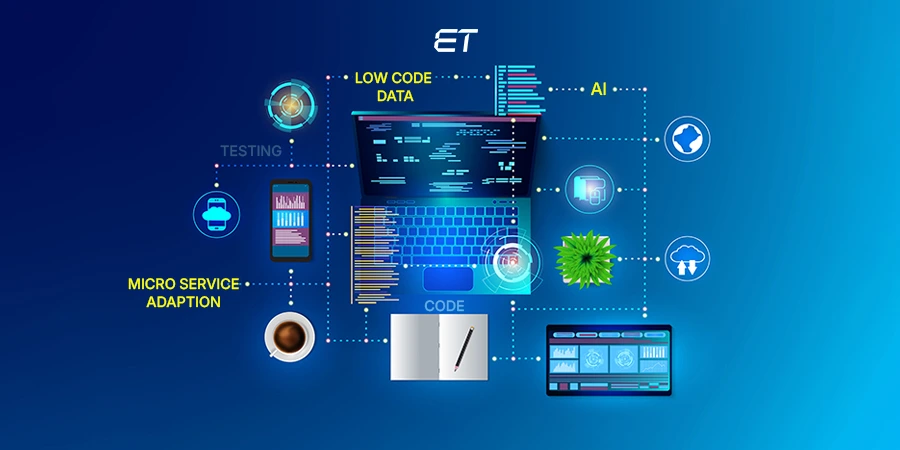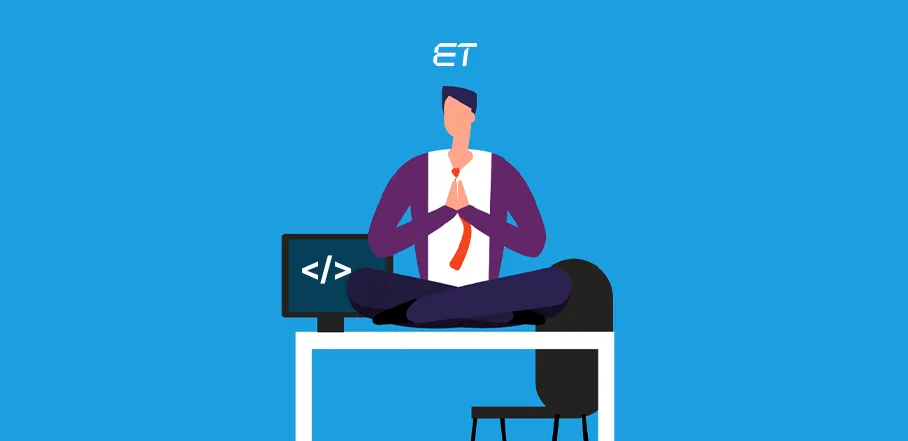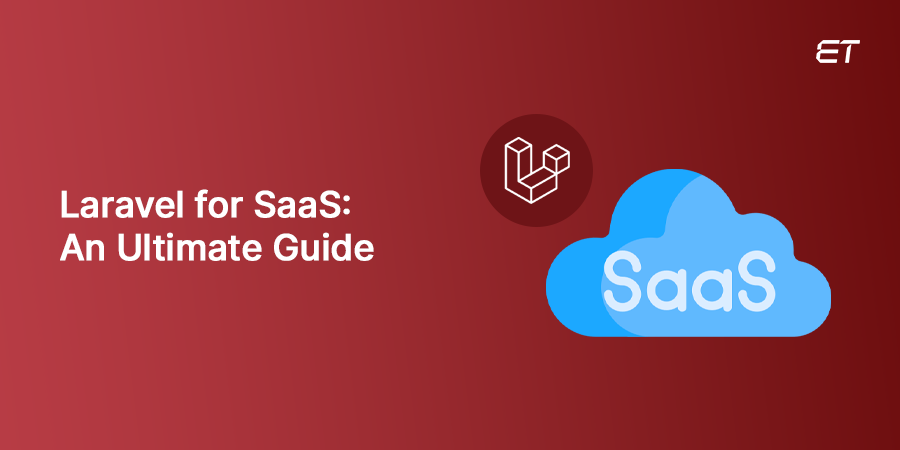
Why Choose Laravel for SaaS?
Imagine using a sword to cut vegetables. Doesn’t fit, right? You need a kitchen knife for that purpose. Only then can you chop fresh veggies efficiently and easily. The same is the case with Laravel for SaaS.
This backend framework is a perfect tool for developing SaaS-based applications. Globally, around 7.6% of developers use Laravel, a preferred choice over Angular.js, Drupal, and Ruby on Rails.
But the main question is – why?
Why do developers prefer Laravel over some other popular frameworks? Should you choose it to build SaaS apps efficiently? Fret not.
You will find all the answers in this blog. So, scroll ahead and know the main reasons for choosing the Laravel framework.
What is Software as a Service (SaaS)?

Simply put, SaaS is a way of using software online instead of installing it on your computer. In SaaS, you rent software instead of buying the digital product.
Confused? Let us explain the concept with a popular example.
You are aware of Netflix, right? This company sells software to their customers so that they can watch licensed videos at their convenience.
So, instead of buying the program, you rent it as a service. Here are some crucial things to know about this model:
- SaaS companies host software on the cloud
- You can access this software by logging in to the platform
- Generally, there is a subscription fee to use the service
Choosing Laravel for SaaS application development can prove lucrative if you are a business. We will explain the main reasons in the subsequent sections. But before that, let us explain Laravel briefly.
Understanding Laravel: The PHP Web App Framework

Taylor Otwell, the CEO of Laravel, stated that this framework is the strongest contender in the PHP ecosystem because it includes the features necessary to build modern web applications.
You might be thinking that Taylor wants to promote his product, hence the praise. If this is the case, think again.
Laravel microservices, a subset of this framework, generate USD 5.7 million in annual revenue. So, one thing is certain: Laravel is very useful in today’s market.
Basically, Laravel is a framework built using PHP.
- It provides pre-written code for common tasks like user logins, storing data, and sending emails
- In addition, Laravel follows a structured approach, making it easier to keep the code clean and organized
Overall, Laravel allows the development team to focus on the creative aspects of development and bring your ideas to life.

Are you curious to know more about Laravel microservices?
Why is Laravel the Right Fit for SaaS?
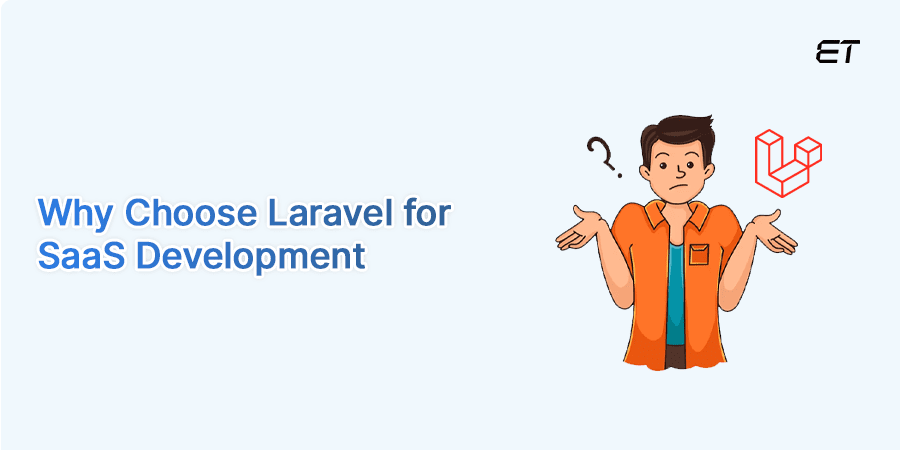
Now, coming to the main question – why choose Laravel for SaaS?
Is it ergonomic? Can you benefit from its cost-effectiveness? Or does it speed-up the development pace of your SaaS product?
Well, understand all the key reasons in this section below.
1. It Has a Strong Foundation

Why is Laravel for SaaS a good decision? Here are two main reasons:
- MVC architecture
- Object-relational mapping (ORM)
Both these aspects contribute towards the strong foundation of this PHP framework.
Laravel enforces a clear separation of concerns with MVC (Model-View-Controller). This facet enables the simple organization of your code.
For instance, models represent your data and its interactions with the database. They handle data logic and interact with the database layer. Next, views focus on presentation, containing the HTML, CSS, and JavaScript that define how users see the application.
Finally, controllers act as the glue between models and views. They receive user requests, interact with models to retrieve or manipulate data, and then choose the appropriate view to display the information.
Regarding ORM, Laravel provides ‘Eloquent’ that simplifies interacting with your database. This powerful ORM acts as a bridge between your PHP code and the underlying database tables.
So, how do you benefit from this ORM execution?
First, Eloquent handles many database interactions automatically, saving you time writing complex SQL queries. Second, it allows you to interact with your database using an object-oriented approach, making your code more readable and maintainable. Finally, Eloquent handles relationships between your data models
Quick Word
Laravel has a well-structured foundation with MVC and Eloquent, so its SaaS applications are easier to maintain, scale, and test.
2. Laravel’s Scalability is Exceptional

One of the best reasons to choose Laravel for SaaS is scalability.
Laravel applications are built using a modular approach. The codebase consists of small, independent components, such as controllers, models, and services.
So, in short, SaaS applications built with Laravel have the following traits:
- Easier to maintain
- Have reusable components
- Allow horizontal scaling
Furthermore, Laravel provides robust caching functionalities with various backends like Redis or Memcached. By caching high-frequency data, you can reduce the load on your application server.
What’s more?
While Laravel works well with MySQL by default, you can configure it to use other database systems like PostgreSQL or SQL Server. This flexibility lets you choose the database that best suits your scalability requirements.
Another solid reason to use Laravel for SaaS is load balancing. As your user base expands, a single server might be unable to handle all the traffic efficiently. In such cases, Laravel can integrate with load-balancing solutions. A load balancer enables the distribution of incoming traffic across multiple web servers, ensuring smooth operation during peak loads.
Quick Word
You can design Laravel SaaS applications to handle increasing user loads and data volumes effectively. So, this framework is a strong choice for building scalable SaaS apps.
3. It Has a Rich Ecosystem
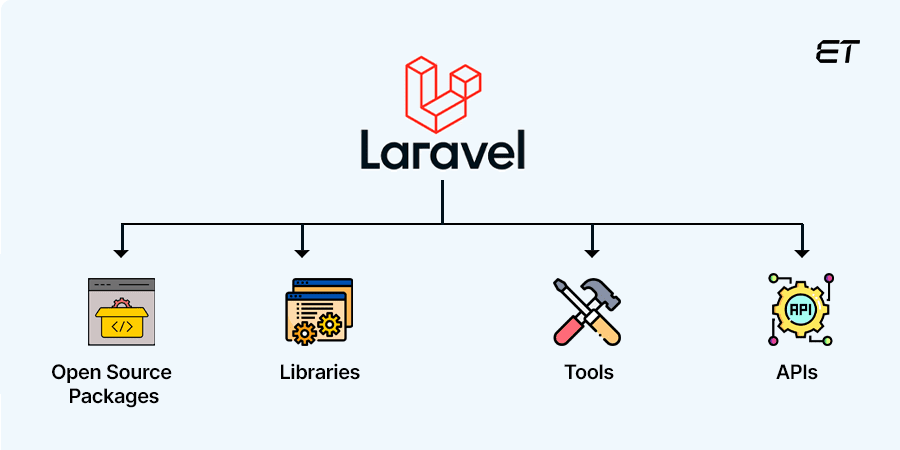
Laravel is one of the best frameworks that supports several third-party packages, tools, and libraries.
For instance, look at Laravel’s extensive library of open-source packages. Prominent names of these libraries are:
- Laravel Breeze
- Stripe
- Laravel Sanctum
- Pusher
- Laravel Cashier
- PayPal
- Tailwind CSS
- Bootstrap and many more
So, how can these packages bolster your SaaS development?
Well, by leveraging these pre-built packages, you save significant development time compared to building everything from scratch.
In addition, the Laravel community is large and active, with numerous forums, discussion boards, and online resources. If you encounter issues during SaaS development, you can find help and guidance from experienced Laravel developers.
Another crucial aspect of choosing Laravel for SaaS application development is documentation. Several tutorials, documentation, and video courses are available online for Laravel and its popular packages. These resources make it easier for developers to learn and experiment with new functionalities.
Quick Word
The rich Laravel ecosystem enables developers to build feature-rich SaaS applications faster and benefit from a supportive community. So, you can bring your SaaS ideas to life profoundly.

4. The Security Features are Noteworthy
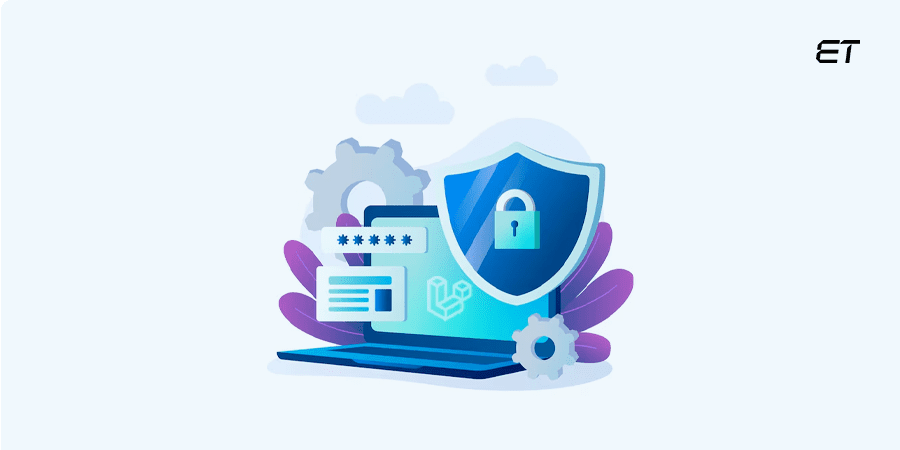
Laravel for SaaS works well mainly due to the multi-layered security approach. How does this work? Read the following points:
- Laravel utilizes ‘Bcrypt hashing’ to securely store user passwords. Bcrypt is a slow hashing algorithm that makes it difficult for attackers to crack passwords using brute-force methods
- This framework also includes CSRF protection out of the box. CSRF attacks attempt to trick a user’s browser into performing unintended actions in your application. With this protection, the system can generate a unique token for each form and verify it before processing the form submission
- Laravel also empowers you to define middleware that acts as a gatekeeper for specific routes. This middleware can perform authentication checks before allowing access to protected areas of your SaaS application
- This PHP framework offers validation features to ensure user input conforms to expected data types and formats. This robust security helps prevent malicious code injection attacks like SQL injection or XSS (Cross-Site Scripting)
- You can leverage packages like Laravel Sanctum to implement secure login, registration, and password reset functionalities. These packages follow industry best practices for secure user management
In fact, stating all the security measures of Laravel can be beyond the scope of this section. So, you can understand the extent of safety you can achieve using Laravel for SaaS application development.
Quick Word
Laravel has several in-built safety measures and auxiliary packages. By implementing these built-in features, following best practices, and staying updated with the latest security knowledge, you can augment the security of your Laravel SaaS application.

Want to read the best front-end security practices as well? Then check our blog on front-end best security practices and get straightforward insights.
5. Laravel Promotes Ease in Code Maintenance

Good code maintainability is one of Laravel’s major strengths. But how does this framework achieve robust code maintenance?
Well, here are the main reasons:
- MVC architecture
- Directory structure
- In-built tools that support unit testing
- Dependency management tools like Composer
MVC keeps your code organized and modular, making it easier to understand, modify, and debug specific application parts. Next, the well-defined directory structure makes it easier for developers to navigate and find the necessary code.
The ability to perform unit tests helps ensure that code behaves as expected and that QA engineers catch regressions in the early stages of development. Also, Composer tracks and manages all third-party libraries and packages your application uses. These activities ensure consistency across development environments and simplify updating dependencies.
With such features, it is easy to maintain clean code and develop your SaaS application efficiently. Hence, many companies choose Laravel as their back-end framework for SaaS.
Quick Word
Laravel’s built-in features help create a well-structured, maintainable codebase that makes managing and evolving your SaaS application easier.
6. It Streamlines SaaS Revenue Processing
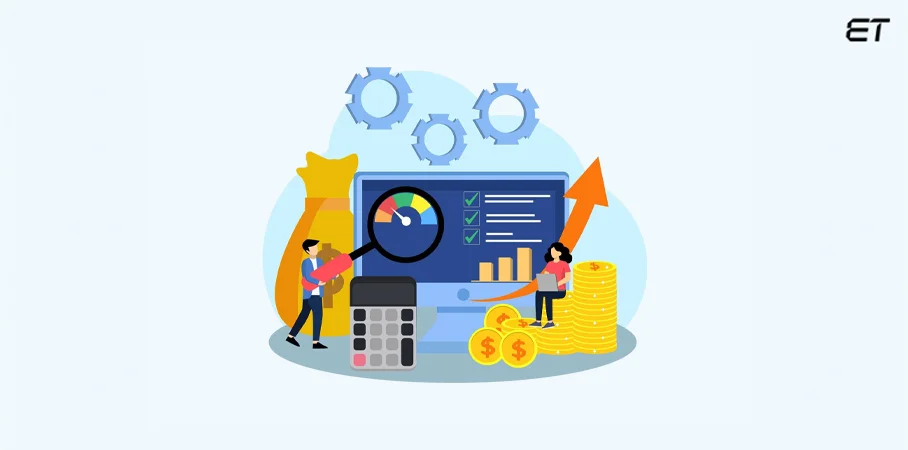
SaaS applications have to process finance and revenue data efficiently. So, choosing Laravel for SaaS can prove to be a good decision due to the following factors:
| Aspect | Explanation |
| Laravel Cashier | This package handles recurring subscriptions and one-time payments. Cashier integrates with popular payment gateways like Stripe, PayPal, and Braintree, allowing you to accept payments easily. |
| Automatic Billing | Laravel Cashier automates the billing process based on your defined subscription plans. It handles recurring charges and customer invoicing, reducing manual work and ensuring timely revenue collection. |
| Automatic Invoice Generation | When a customer subscribes to a plan, Laravel can automatically generate invoices. You can customize these invoices with your branding and include details like subscription plan, pricing, taxes, and payment information. |
| Reporting Tools | By integrating reporting tools, you can generate reports on various aspects of your revenue, such as monthly recurring revenue (MRR), customer acquisition costs (CAC), churn rate, and revenue by subscription plan. |
In simple words, this PHP framework greatly refines your revenue processing workflow, making it a natural choice for many developers who work on SaaS applications.
Quick Word
Laravel automates repetitive tasks like billing and invoicing, simplifies payment collection, and provides valuable data for financial reporting. So, by choosing Laravel for SaaS, you can focus on other activities like growing your business exponentially.
7. It Has In-built API Support

This reason will be highly relevant for the technical folks.
API stands for Application Programming Interface. These interfaces act as messengers, allowing different apps to work together and share information seamlessly.
To simplify the concept, here are some famous examples:
- Social Media Logins: Many websites allow you to sign in using your social media accounts. This activity is the result of APIs that verify your identity with the social media platform
- Travel Booking Apps: When you search for flights or hotels on a travel booking app, the applications query various airline and hotel reservation APIs to find the most relevant option
- Weather Apps: The weather information you see on your phone uses an API to retrieve data from a weather service and present it in a user-friendly way
Hopefully, this explanation is sufficient to describe APIs for non-technical individuals. Now, let us move on to understanding the choice of Laravel for SaaS regarding its API support.
The main point here is that Laravel has robust in-built API support. For instance, it promotes building APIs that adhere to RESTful principles. This ability establishes a consistent standard for accessing data.
Also, Laravel utilizes JSON (JavaScript Object Notation) as the preferred format for data exchange within its APIs. JSON is lightweight and widely supported by various programming languages. This facet simplifies data exchange between your SaaS application and any external applications that consume your API.
Quick Word
Laravel’s built-in API support can create well-structured, secure, and developer-friendly APIs for your SaaS application. This allows you to expand your application’s functionality and create a thriving ecosystem.

Want certified Laravel experts to take care of the technical front? Then, contact us today!
Famous SaaS Applications Built With Laravel
Now, let us back down to the reasons with some real names of SaaS applications that leveraged Laravel. Take a look at the table below to get a quick idea.
| Name of SaaS Application/Tool | Utility |
| Wave | This is an invoicing and accounting software solution for freelancers and small businesses. |
| Scout APM | It is a Laravel app performance monitoring tool for web applications. |
| Cloudways | This is a robust cloud hosting platform that provides infrastructure for various web applications, including Laravel applications. |
| Laravel Envoyer | It is a dedicated deployment tool specifically designed for Laravel applications. |
| Snipe-IT | This is an IT asset management application that tracks hardware, software, and licenses. |
Pros and Cons of Using Laravel for SaaS
As a decision maker, it is vital to be aware of both sides of the coin. While Laravel for SaaS is a good choice for several reasons, it does have its set of limitations to understand.
So, look at the pros and cons of using Laravel for SaaS application development.
| Pros of Using Laravel for SaaS | |
| Strong foundation | Rich ecosystem of tools and libraries |
| Scalability and security | Cost effective option |
Now, take a quick glance at the limitations.
| Cons of Using Laravel for SaaS | |
| Medium learning curve for new developers | Can be unsuitable for large enterprise apps |
| You need proper knowledge of maintaining best security practices | Susceptible to complex codebase development |
Wrapping Up
Building a robust SaaS application requires a powerful foundation. Laravel for SaaS development puts forth a solid case.
It has MVC architecture and clean code principles that promote maintainability as your application scales. Further, security features and a rich ecosystem of packages ensure a feature-rich user experience.
You can also streamline development by leveraging Laravel’s built-in functionalities for tasks like subscription management and API creation. While there’s a learning curve, Laravel’s cost-effectiveness and large community make it a good choice for businesses looking to bring their SaaS vision to life.
So, choosing Laravel for SaaS is a decision with many positives. If you feel this option is good for bolstering your SaaS app development, contact us. With a team of dedicated Laravel developers, we can use this back-end framework to develop your SaaS software at a high quality and brisk pace.
Frequently Asked Questions
1. Can I build my SaaS application faster with Laravel?
Yes. Laravel’s features like Blade templating, built-in functionalities, and a vast ecosystem of pre-built packages streamline development. You can focus on core functionalities and deliver features faster compared to building everything from scratch.
2. What are the ongoing costs associated with using Laravel for SaaS?
Laravel itself is open-source and free to use. The primary ongoing cost might be developer expertise. However, the large and active Laravel community can help reduce reliance on expensive consultants. Additionally, many packages within the ecosystem are free or offer affordable pricing models.
3. Is Laravel too complex for a small business to build a simple SaaS product?
Laravel offers a range of features and functionalities, but you don’t need to use everything at once. Its modular design enables you to initiate with a basic setup and gradually add complexity as your SaaS application grows. Additionally, the framework provides a clear separation of concerns (MVC architecture), making it easier for developers, even those new to Laravel, to understand and manage the codebase for a simple SaaS product.



